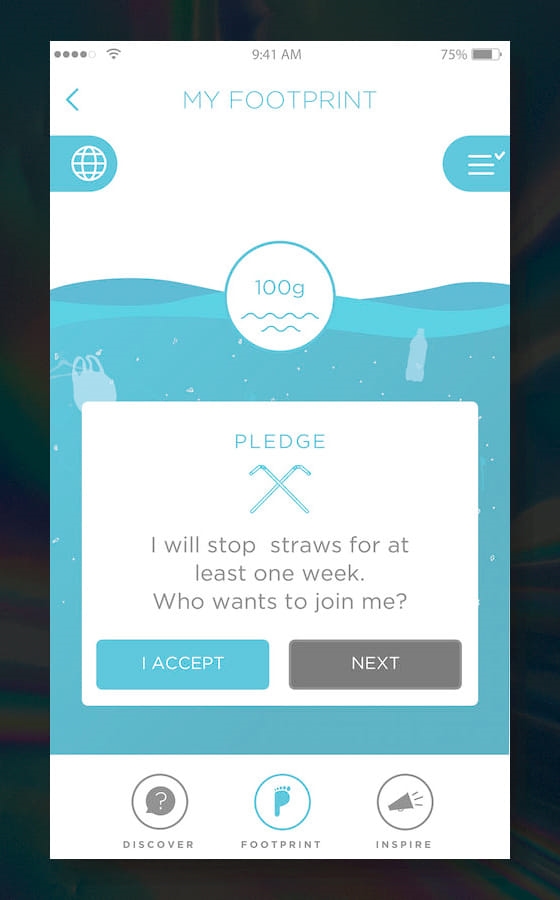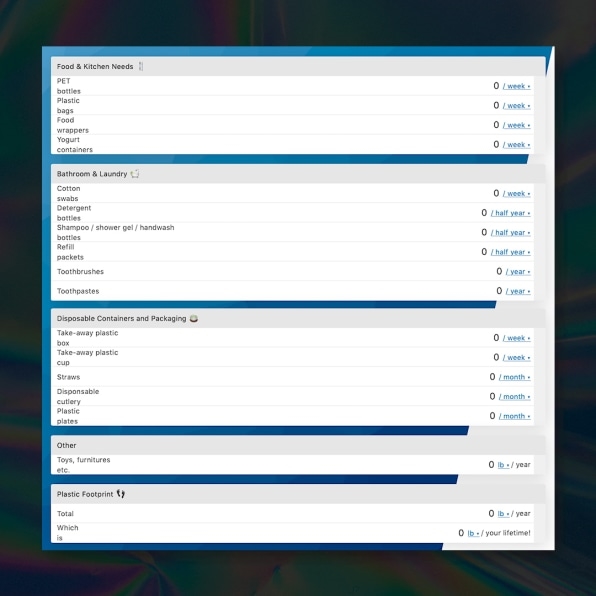Calculate exactly how much plastic trash you generate in a year
It’s getting easier to avoid plastic. Zero-waste grocery stores, from Brooklyn to Hong Kong to Berlin, sell food without plastic packaging. It’s possible to buy plastic-free toothbrushes, cardboard poop scoopers for your dog, and biodegradable vibrators (made from plastic, but plant-based). Still, plastic is ubiquitous, and most of us probably buy at least one item made from the material or packaged in it every day. A handful of calculators are designed to help you estimate how much you’re contributing to the problem.

[Screenshot: Plastic Soup Foundation]
One tool, from a startup called Omni Calculator, asks simple questions about a typical week, tallying up how many plastic bottles or takeaway boxes or yogurt containers you use, and then telling you roughly how many pounds of plastic you use in a year or that you’ll use in your lifetime. Another, from Greenpeace’s U.K. office, adds up the number of plastic items you buy and then forces you to scroll through a visual representation of your annual pile of trash. An app called My Little Plastic Footprint goes further, helping users track their progress toward zero waste over time.

[Image: Omnicalculator]
Each tool attempts to draw the connection between daily habits and the overall challenge: Every minute, the equivalent of a dump truck’s load of plastic ends up in the ocean, where it eventually breaks into microscopic fragments that may end up in wildlife or the fish we eat. Of the rest of the plastic produced each year, only a tiny fraction is recycled. Most of the 9 billion-plus tons of plastic that humanity has manufactured so far sits in landfills. The plastic fork you used for three minutes at lunch will likely still exist on the planet in some form 400 years from now.
The changes that need to happen are systemic. As it stands, the world is on track to produce four times more plastic in 2050 than it did in 2010. Much of the plastic use happens before consumers make choices in a store; if your fruit showed up at the supermarket in a shrink-wrapped pallet, avoiding a plastic bag in the produce aisle won’t solve the whole problem. Still, consumer pressure is leading to larger changes, from some supermarkets phasing out single-use plastic packaging on their products to mass manufacturers experimenting with refillable packaging.
A tally of their total plastic use can help consumers make different choices and lobby for broader change after understanding their own role in the problem. “We wanted to raise the awareness of plastic pollution and–most importantly–our individual impact,” says Hanna Pamula, who created the tool for Omni Calculator. “Many may claim that it doesn’t matter, as we use way less plastic than big companies, but when we’re looking at yearly or lifetime plastic use, the amount is horrifying. Also, as customers, we have a strong influence on the companies by our everyday choices.”
Fast Company , Read Full Story
(41)



